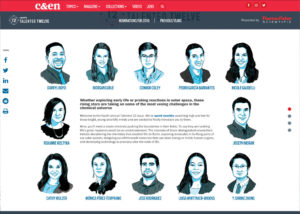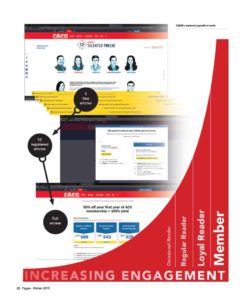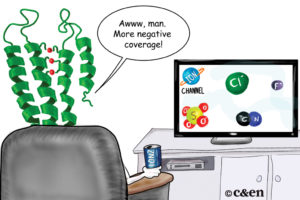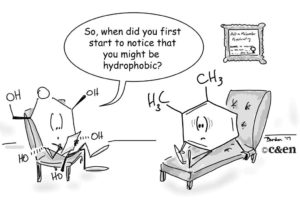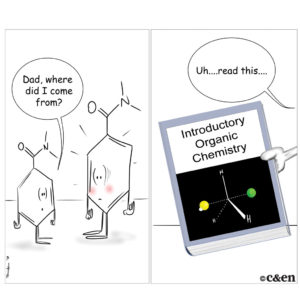
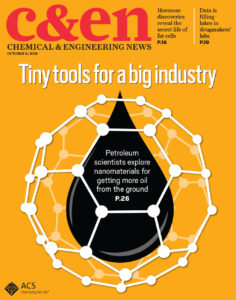
Develop a “fail fast” philosophy
When it comes to product development, you better learn fast whether your idea is going to fly or flop. Most of us can ill-afford delays or — heaven forbid — getting it wrong when it comes to large IT projects.
One approach that is open to all, whatever the size of your pockets, is rapid prototyping and extensive user testing. The principle, “If you are going to fail, fail fast,” is based on a continuous cycle of learning, iterating, and testing. Brainstorm, develop a prototype, complete user testing, feed that back into the development process, iterate, and start again. This doesn’t foolproof your development process, but it certainly makes it less likely that you’ll find yourself at a dead-end.
One essential component of this approach is securing help from those who matter most: your readers (aka your new user testing group). We put out a call on social media for (member and non-member) volunteers. To our surprise, more than 400 individuals agreed to be part of our user group, which we named (yes, we user-tested the name, too) the C&EN Reader Lab.
Do not leave stuff on the cutting room floor
 If you want to extract every ounce of value out of your content, rethink what happens to the material you cut from your primary products. Your editorial team does a huge amount of work while brainstorming, talking to sources, and developing stories that may never see the light of day. In some instances, a quick interview may require 15-20 minutes of investment for a mere quote in a 400-word story. Why not turn those interviews — or excerpts thereof — into podcasts?
If you want to extract every ounce of value out of your content, rethink what happens to the material you cut from your primary products. Your editorial team does a huge amount of work while brainstorming, talking to sources, and developing stories that may never see the light of day. In some instances, a quick interview may require 15-20 minutes of investment for a mere quote in a 400-word story. Why not turn those interviews — or excerpts thereof — into podcasts?
At C&EN, we exploited the success of recent cannabis-related coverage by following up with sponsored webinars on the topic. We ran several long-form articles on cannabis chemistry in the magazine but had left plenty on the cutting room floor, including detailed discussions of quality, safety issues, and techniques to detect the presence of contaminants. Our writer helped bring a webinar to life with minimum additional effort and investment. The webinar was multi-sponsored by three instrument manufacturers developing equipment and protocols for use in cannabis chemistry.
Powerful Chemistry
A revenue-growth mindset + readers-first strategy = growing profitability
By Bibiana Campos Seijo
Editors don’t have the luxury of just editing anymore. The modern editor thinks — and acts — like an entrepreneur. Or should. Given the financial pressures we’re under, including the incredibly fast-paced technology revolution and the level of investment it requires, we need to squeeze every little bit of value out of our content. We need to leverage it for profitability. Our responsibility now extends beyond the written word into the realm of product development and, and by default, business development.
We’ve long been operating on a model that says, “If we build it, they [readers and advertisers] will come.” The problem is, it doesn’t work. Or rather, it worked in the past, when print publishing had no meaningful competition, but not anymore. The editor and his/her team increasingly must figure out how to add value for both parties and how to transform that value into actual revenue.
We know that readers are looking for relevance and quality they can’t find elsewhere. We know advertisers want campaigns where they can measure results and guarantee a return on their investment. How do we turn this into “value?” As editor-in-chief of Chemical & Engineering News (C&EN), my team and I have been focused on exactly this question — and we’ve made progress. We are developing products and services that support and grow our revenue streams while diversifying our business model.
C&EN is the independent news organization of the American Chemical Society (ACS), the largest scientific society in the world. C&EN covers all aspects of the chemical enterprise, including cutting-edge science, business, policy, and education. It consistently ranks as the most important and most valued membership benefit for the 150,000+ members of ACS, with overall satisfaction scores reaching the upper 90s. At C&EN, we run a daily news service that includes content in a variety of formats — text, video, podcasts, interactives — across a variety of platforms, including desktop and mobile. We also curate a selection of our best content into a weekly print publication, C&EN magazine, distributed to ACS members. Going on 96 years of continuous publication, the magazine is often described as “the glue that holds ACS together.”
The last few years have been transformative for C&EN. We have focused on operational excellence and reinvented many of our systems and processes. And in parallel, we have continued to develop our editorial and product offering. Take, for example, the creation of our awards program.
Recognition!
We wanted to develop a recognition program for individuals in the chemical sciences. The hurdle was that our parent organization runs a successful and comprehensive awards program, and we didn’t want to compete internally. So how do we add value to what is already there? And, more importantly, how do we go about launching this in a way that doesn’t generate another cost center and, instead, pulls in a profit?
A couple of entrepreneurial editors at C&EN took on the challenge. They reviewed ACS’s program and identified opportunity areas that were underserved and where we could make an impact. For example, most existing awards were given to a single, established scientist. More often than not, this scientist was a researcher in academia, and in most cases, the award recognized work that had been done within one specific area of chemistry. At C&EN, we decided to create an award that recognizes a group (we call it a “class,” e.g., “The class of 2018”) of early career researchers working across academia, industry, and government in all areas of chemistry, all over the world. We created C&EN’s “Talented 12” awards program.
At launch, the program consisted of a series of profiles on these 12 trailblazers featured both in print and on the C&EN website. The reception from the community was so positive that for year two, we added a live component: an event held at one of ACS’s national meetings featuring the Talented 12 winners giving TED-style talks. The goal was to showcase these individuals and their cutting-edge research, and it was a standing-room-only success. We recorded the presentations and released the videos after the event to further capitalize on the momentum the editorial package had created and the event helped maintain. We made the videos publicly available on YouTube and our website, and they became highly shareable, evergreen pieces we could use to promote the program throughout the ensuing year.
Fast forward to year four of the program, and we’re in the middle of a two-year sponsorship by Thermo Fisher Scientific, the largest scientific instrument manufacturer in the world. It’s a six-figure deal that covers many of the program costs, helps us offer greater support to the winners, and, importantly, allows us to elevate the profile of the Talented 12 program. With the support of our sponsor, we’re promoting more heavily and broadly and, in 2018, yielded the most diverse group of winners yet. We had the largest number of nominations to date, the most nominations for individuals working in industry, and nominations of worthy candidates coming from more than a handful of chemistry Nobel Prize winners. A combination of entrepreneurship and intelligent product development thinking ultimately yielded this new revenue stream for C&EN, which we’re now working to expand. In fact, we’re currently seeking sponsorship for an editorial package we have run for four years now and want to develop into an event. Called “Ten Start-Ups to Watch,” it recognizes start-up companies doing groundbreaking work in the chemical sciences.
Readers First!
So, what’s our approach to product development? What drives our ideation process? Fundamentally, we believe that audience is king. We put our readers and their needs at the core of everything we do. That’s our secret. Unfortunately, there’s a lot of noise out there — a lot of distractions and many different forces competing for readers’ attention and their disposable income. To be successful, any magazine or news organization needs to remain hyper-focused on a reader-centric approach, fueled with quality content. Engagement engenders loyalty, and we know that for a membership organization like ACS, the more engaged members are, the more satisfied they are and thus likely to renew their memberships. And engagement also leads to higher recruitment rates. We know, for example, that a non-member who has been to an ACS national meeting is far more likely to join ACS than one who hasn’t.
Given these realities, C&EN’s strategy has been to increase engagement — specifically, to increase the number of interactions a potential reader has with our products and services. This can mean interacting with our social media channels, registering to receive one of our newsletters, or subscribing to C&EN’s podcast, for example. As the number of interactions increases (and if you’ve got your content strategy right, I guarantee you it will), an occasional reader may become a regular reader, who in turn will become a loyal reader, ultimately becoming a member. We refer to this journey as the membership pipeline. Our goal is to develop content, products, and activities that take as many readers as possible from left to right in this flow (see graphic).
Social media and newsletters are key components of this engagement strategy and have proven very effective at creating a vacuum to draw readers in. But the most powerful and effective online tool we have developed to drive engagement is C&EN’s metered paywall. It enables us to push readers further along the pipeline while also giving us a new, parallel revenue stream.
Pay Us Now!
For years, we had a traditional paywall in place on our website. It allowed ACS members full access to our content after authenticating their credentials. Non-members were restricted to a limited amount of content pre-selected by the editorial team (often this was free access to news for a two-week period, no registration required). While this paywall gave readers — members and non-members — respective access to content, we had no means of tracking their content interests or pushing them along the pipeline. In the case of ACS members, we could look at the demographic information they provide when becoming members and make some basic assumptions about their topic interests. We knew very little about the millions of readers who came to our website and consumed our publicly available content every year. Once they had read whatever stories they were interested in, they’d go away — potentially forever — and we’d have no means of enticing them back. To solve these challenges, we made the decision in 2017 to launch a metered paywall.
Here’s how it works. The new paywall gives full access to ACS members upon authentication; same as before. Non-members have access to any content, but their access is restricted to five (=n) pieces per month. Once they get to story number five, they are given the option to “register” with our website and increase their story limit to 10 (=m) pieces of content per month. Registration is a painless process, requiring basic personal information, such as name and email address, and inviting readers to sign up for our weekly e-newsletter (almost 50 percent have). Avid readers who surpass the limit of 10 pieces per month are then prompted to join ACS and enjoy all the benefits of membership, including full access to C&EN content.
We are in the early days of this effort, but results are promising. Since we launched the new paywall in August, we’ve had 1,500 readers register and, of them, about 90 have moved along the pipeline to purchase full membership. Next steps for us include fine-tuning the n and m numbers to ensure users have enough access to give them a feel for our content while enabling us to collect (through usage stats) enough information about them and their preferences such that we can continue to deliver the content that attracted them in the first place.
Personally Engaging!
This leads to our next potential avenue for product development: personalization. Engagement and personalization go hand in hand. For C&EN, personalization will build off the fact that we are a niche news organization with a captive audience made up of professional chemists. Future plans for the metered paywall include data collection beyond contact details. On our site registration form, we want to gather information about our readers’ industry and career focus (e.g., “Do you work in industry, academia, government lab?”) and preferences (e.g., “What topics/areas are you interested in?”). This information will set the stage for us to serve increasingly relevant content to our readers.
The biggest hurdle for any personalization strategy is trust. With the rollout of GDPR and privacy breach stories constantly grabbing the headlines, collecting and storing data wisely and securely are critical to successfully implementing personalization. And, the reputation of the collecting organization matters. As we were designing the user experience for the metered paywall and conducting user testing sessions, we were surprised to learn that our readers are OK with sharing personal data with us (place of work, job title, education level, etc.). This signals trust in our brand and speaks to the relationship we have established with our readers. There is one caveat, though: They want something in return. Whether it’s early or exclusive access to a new product or service, or receiving a tailored, more relevant news feed, they want their data to be used to add value to their experience. So publishers who can use data effectively to tailor and craft their content approach will win. Our vision includes repackaging our content around themes and distributing it to chemists working in those specific areas. This could result in a series of articles being turned into an e-book or themed newsletter that could attract underwriting from an organization that’s offering products and services in that area of chemistry.
The metered paywall is allowing us to create engagement and to monetize that engagement through membership purchases. Once we’re able to collect additional data, we’ll have the key to personalization, which will open the door to monetizable content packaging.
An entrepreneurial approach is key to success these days. The old paradigm of “build it, and they will come” no longer works. Instead, the pressure is on to extract every bit of value out of your content. A focus on reader engagement and intelligent product development can do wonders in terms of diversifying revenue and, ultimately, protecting the bottom line.
Bibiana Campos Seijo has been editor-in-chief of Chemical & Engineering News (C&EN) and vice president of the C&EN Media Group since 2014. She has overseen the digital transformation of the news organization as well as its international expansion. In 2018, among other accolades, C&EN received the Folio: award for Overall Editorial Excellence among associations. Connect via
seijo@pagesthemagazine.com.

